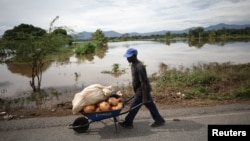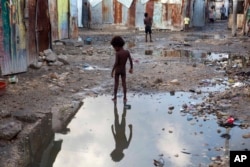It could take months for Haitian farmers to recover as heavy rains brought by Hurricane Irma have flooded parts of the impoverished Caribbean nation, humanitarians said, calling for better disaster preparedness.
Haiti did not take a direct hit from Irma, one of the most powerful Atlantic hurricanes on record, but it unleashed rains that washed away fields of rice and plantains in coastal areas.
Some 18,000 poor families in the worst-hit north have lost their food crops, according to preliminary damage assessments by Haiti's agriculture ministry.
"Their livelihoods have been, and will be, severely affected," Ronald Tran Ba Huy, the World Food Program's (WFP) country director, told Reuters.
Haiti, one of the world's poorest nations, struggles to feed its population of 10 million, many of whom are subsistence farmers.
Irma, which has now weakened to a tropical storm, has killed more than 60 people in its rampage through the Caribbean and the Southeastern United States.
Of those, 43 deaths were in the Caribbean.
The storm toppled homes and looting erupted in some Caribbean islands, mostly overseas territories belonging to European countries that have sent troops to deliver aid and provide security.
In Haiti, about half of the 12,000 people who were evacuated ahead of Irma have gone back home but many have returned to flooded fields and they will struggle to get back on their feet, Tran Ba Huy said.
The WFP and other aid agencies have distributed food to Haitians in shelters but the extent of the damage is unclear as assessments are ongoing, he said.
Irma comes on the back of three years of drought in northern Haiti, and less than a year after Hurricane Matthew battered the nation, leaving about 1.4 million people in need of food aid.
The former French colony was also devastated by an earthquake in 2010.
More than one in five Haitian children under five suffer chronic malnutrition, government figures show.
Haitian authorities should help people better prepare for disasters to lessen their impact, said Ascension Martinez, Haiti advocacy director for the charity Save the Children.
Communities can ensure sanitation pits are deep enough, collect rubbish regularly, build up levy banks, and make sure homes and schools are not built near shorelines to reduce the damage disasters bring, she said by phone.
Providing sealed plastic bags to keep personal documents dry and tins to store seeds can also help people recover more quickly after a disaster, Martinez said.
"There needs to be a far greater effort all round to develop risk reduction," she said.









